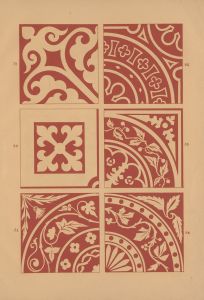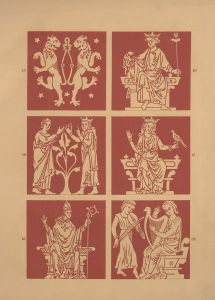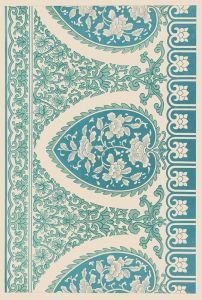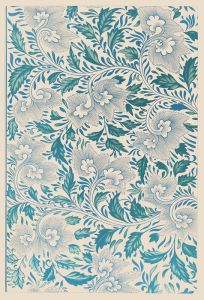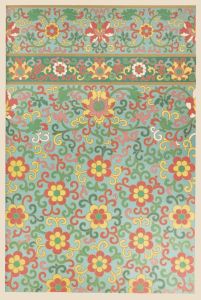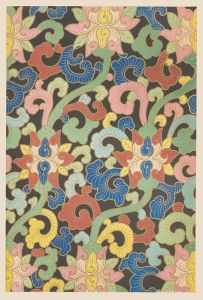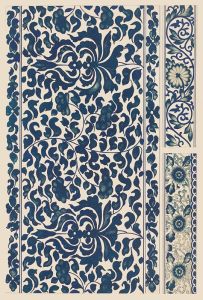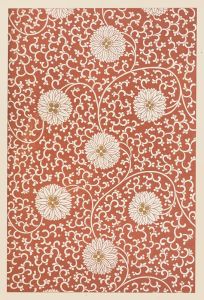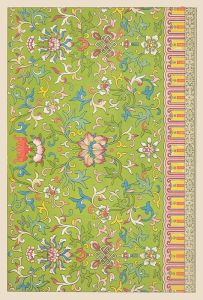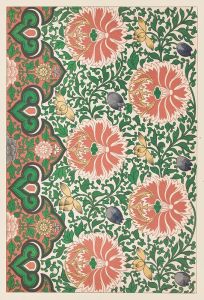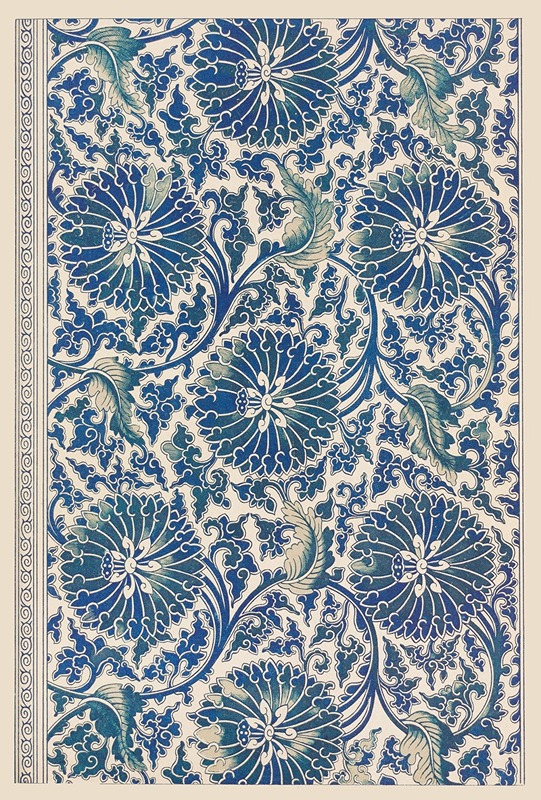
Examples of Chinese ornament, Pl.19
A hand-painted replica of Owen Jones’s masterpiece Examples of Chinese ornament, Pl.19, meticulously crafted by professional artists to capture the true essence of the original. Each piece is created with museum-quality canvas and rare mineral pigments, carefully painted by experienced artists with delicate brushstrokes and rich, layered colors to perfectly recreate the texture of the original artwork. Unlike machine-printed reproductions, this hand-painted version brings the painting to life, infused with the artist’s emotions and skill in every stroke. Whether for personal collection or home decoration, it instantly elevates the artistic atmosphere of any space.
"Examples of Chinese Ornament, Pl.19" is a plate from the influential design book "The Grammar of Ornament" by Owen Jones, first published in 1856. Owen Jones was a British architect and designer who played a significant role in the development of modern design principles. His book is a comprehensive collection of decorative arts from various cultures and historical periods, aimed at providing inspiration and guidance for designers and artists.
Plate 19 specifically showcases examples of Chinese ornamentation. The illustrations in this plate are meticulously detailed and highlight the intricate patterns and motifs that are characteristic of traditional Chinese decorative art. These designs often include elements such as floral patterns, geometric shapes, and symbolic imagery, which are deeply rooted in Chinese cultural and artistic traditions.
Jones's work was groundbreaking in its systematic approach to cataloging and analyzing decorative arts from around the world. He believed that understanding the principles behind these designs could lead to better and more informed design practices in contemporary art and architecture. "The Grammar of Ornament" was one of the first books to present a global perspective on design, and it remains a valuable resource for designers and historians today.
The Chinese ornaments depicted in Plate 19 reflect the rich heritage of Chinese art, which has a long history of incorporating symbolism and meaning into its decorative elements. Common motifs in Chinese ornamentation include dragons, phoenixes, lotus flowers, and other natural elements, each carrying specific cultural significance. For example, the dragon is a symbol of power and strength, while the phoenix represents beauty and grace.
Jones's illustrations are not only artistically impressive but also serve as an educational tool. By studying these examples, designers can gain insight into the traditional techniques and aesthetic principles that have shaped Chinese art over centuries. The precision and beauty of these designs demonstrate the high level of craftsmanship and artistic skill that Chinese artisans have achieved.
In summary, "Examples of Chinese Ornament, Pl.19" by Owen Jones is a significant piece of art history that offers a window into the rich tradition of Chinese decorative arts. It is part of a larger effort by Jones to document and share the world's diverse artistic heritage, providing valuable insights and inspiration for future generations of designers.





